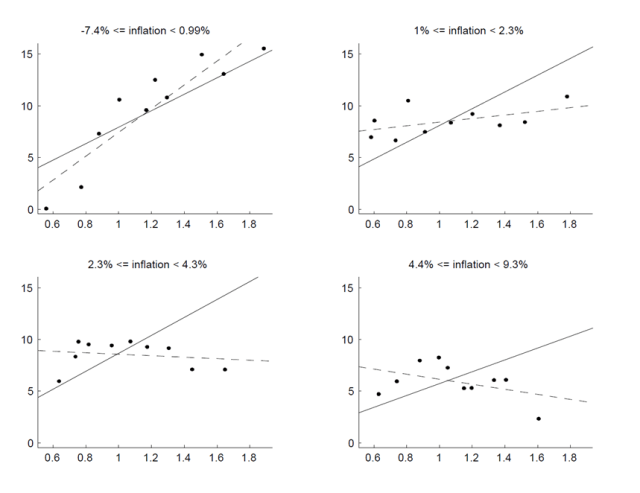Vices, Virtues, and a Little Humor: 30 Quotes from Financial History
Why do smart investors repeat the same mistakes generation after generation? Because financial instincts — like fear, envy, and overconfidence — are ancient, stubborn, and terribly unsuited for modern markets. Fortunately, financial history leaves behind a paper trail of wisdom, wit, and hard-won lessons. Sometimes, a single quote can do more to correct a bad habit than a hundred charts. That’s what brought us together. On March 19, 2025, I met Rachel Kloepfer. It was right after my keynote presentation at the Second Annual Institute of Advanced Investment Management (IAIM) conference at the University of Utah. My talk emphasized how investors can use financial history to gain a deeper understanding of current financial events and a clearer vision of the future. I closed with a few quotes from the past — concise and enduring truths which I hoped attendees could use to make better decisions. Afterward, Rachel — a former journalist and fellow financial history enthusiast — suggested expanding the list. We sifted through hundreds of quotes. Some are serious, some are funny, but all come from people who lived through the financial highs and lows of the past 200 years. The result is a curated set of 30 quotes exclusively for Enterprising Investor grouped by the vices to avoid, the virtues to adopt, and a little humor to stay sane through it all. We chose timeless quotes designed to resonate across generations, reminders that whether you’re new to investing or decades into your career, history still has something to teach you. VICES The most tragic mistakes in finance are those we could have avoided — if only we had learned from the past. Yet these errors persist because our instincts, once essential for survival, often backfire in markets. Until evolution catches up, our best remedy is historical awareness. The quotes that follow highlight some of the most damaging investor vices. Committing them to memory can help you resist these patterns — and free the mental capacity needed to cultivate more productive virtues. Envy “Nothing so undermines your financial judgement as the sight of your neighbor getting rich.” —J. PIERPONT MORGAN, financier Impatience “The delusion lies in the conception of time. The great stock-market bull seeks to condense the future into a few days, to discount the long march of history, and capture the present value of all future riches. It is [their] strident demand for everything right now — to own the future in money right now — that cannot tolerate even the notion of futurity.” —JAMES BUCHAN, author of Frozen Desire: The Meaning of Money Dishonesty “A business model that relies on trickery is doomed to fail.” —CHARLIE MUNGER, late vice chairman of Berkshire Hathaway Hubris “The weakness of human nature prevents men from being good judges of their own deservings.” —LOUIS BRANDEIS, author of Other People’s Money Overconfidence “When a speculator wins, he don’t stop till he loses.” —GEORGE H. LORIMER, 19th century merchant Complacency “Always remember that somewhere someone is making a product that will make your product obsolete.” —GEORGES DORIOT, founding father of venture capital Denial “Faced with the choice between changing one’s mind and proving that there is no need to do so, almost everybody gets busy on the proof.” —JOHN KENNETH GALBRAITH, financial historian Overthinking It’s remarkable how much long-term advantage people like us have gotten by trying to be consistently not stupid, instead of trying to be very intelligent.” —CHARLIE MUNGER, late vice chairman of Berkshire Hathaway Herd Behavior “Once a majority of players adopts a heretofore contrarian position, the minority view becomes the widely held perspective.” —DAVID SWENSEN, late CIO of the Yale University Endowment Blind Faith “The investing public is fascinated and captured by the great financial mind. That fascination derives, in turn, from the scale of the financial operations and the feeling that, with so much money involved, the mental resources behind them cannot be less.” —JOHN KENNETH GALBRAITH, financial historian VIRTUES Shedding harmful instincts is only the beginning. The next step is to fill that space with virtues — a far more difficult task. Vices are common and instinctive; virtues are behavioral anomalies. The most powerful virtues are rare, easy to dismiss, and even easier to forget. The following 10 quotes come from financial minds who successfully navigated some of the most unforgiving markets in US history. Committing them to memory is a powerful next step toward becoming a more adept investor. Passion “All the genius I have lives in this: when I have a subject in hand, I study it profoundly. Day and night it is before me. My mind becomes pervaded with it. Then the effort that I’ve made is what people are pleased to call the fruit of genius. It is the fruit of labor and thought.” —ALEXANDER HAMILTON, first US Secretary of the Treasury Thrift “I smoke four-cent cigars and I like them. If I were to smoke better ones, I might lose my taste for the cheap ones that I now find quite satisfactory.” —EDWARD ROBINSON, father of Hetty Green, the Queen of Wall Street Self-Discipline “Several decades would pass, and many vicissitudes to be undergone before I could master the simplest and most important of all the rules of material welfare: The most brilliant financial strategy consists of living well within one’s means.” —BENJAMIN GRAHAM, founder of the value investing philosophy Competence “A small bunch of people who know what they are doing can accomplish more than a big group of people who don’t know what they are doing.” —ROBERT NOYCE, founder of Intel Corporation Historical Awareness “You can’t really understand what is going on now unless you understand what came before.” —STEVE JOBS, founder of Apple Computer Education “Proper education is one long exercise in augmentation of high cognition so that our wisdom becomes strong enough to destroy wrong thinking maintained by resistance to change.” —CHARLIE MUNGER, late vice chairman of Berkshire Hathaway Humility “There is a prudent maxim of the economic forecaster’s trade that is too often ignored: Pick
Vices, Virtues, and a Little Humor: 30 Quotes from Financial History Read More »













